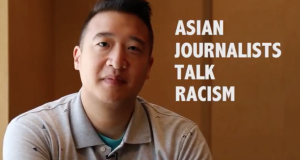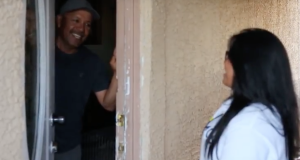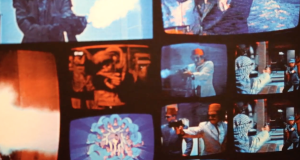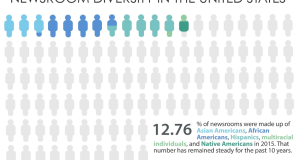Two years after the National Association of Black Journalists’ departure from UNITY, the National Association of Hispanic Journalists followed suit in 2013, causing many to question the current state of UNITY and whether it is living up to its core mission.
Since joining forces with the National Lesbian and Gay Journalists Association in 2011, the UNITY board of directors voted to make its name more inclusive by changing it from UNITY: Journalists of Color Inc. to UNITY: Journalists for Diversity Inc.
“UNITY can — and should — provide a platform to have larger conversations about diversity and coverage to facilitate greater understanding and, at the end of the day, improve journalism as a whole,” said Sarah Blazucki, NLGJA’s vice president for print and online. “Ensuring diversity in newsrooms is essential to making sure that all of America’s diversity is being covered fairly and accurately, including race, ethnicity, sexual orientation and gender identity.”
But the name change wasn’t without controversy.
Hugo Balta, president of NAHJ, said that while NAHJ gladly welcomes NLGJA as a member of UNITY, the group questioned the new role of UNITY and its addition of non-ethnic minority journalists to the group.
NABJ President Bob Butler agreed and said in an e-mail, “UNITY’s original mission was clear when it advocated on behalf of journalists of color. I am unclear on UNITY’s current mission.”
On the contrary, UNITY President David Steinberg says, UNITY’s mission has always been clear and nothing has changed its core task: increasing diversity in the workforce and promoting fair and accurate coverage of diverse communities.
“We are also working both with past partners like NABJ and NAHJ as well as broader journalism organizations like ASNE and SPJ to ensure that the issue of diversity in coverage and staffing isn’t a casualty of media consolidation or financial difficulties,” Steinberg said. “At this time, there is no plan to add organizations to UNITY, however we are committed to collaborating with organizations to advance our shared mission.”
Roberto Quiñones, UNITY executive director, agreed that the notion of a “changing UNITY mission” is a matter of interpretation and the name change embraces broad terms of diversity and inclusion, making sure everyone is covered under the umbrella.
Although NABJ and NAHJ aren’t officially allied with UNITY, Butler and Balta recently announced that the two organizations will hold a joint convention in 2016.
The presidents stated the joint convention could attract 3,000 journalists of color, making it the largest conference since UNITY’s 2008 Chicago convention.
Butler said the joint convention should not be compared with UNITY because UNITY was one organization while their convention will contain two.
As for why NAHJ left UNITY, Balta stated NAHJ had concerns with UNITY when he first joined the board of directors in 2012. Among those concerns were the economic and structural impact of NABJ’s departure and the financial structure of the organization
After raising those concerns, Balta said, “there was a push to continue business as usual, which was not satisfactory to myself or NAHJ reps. We had numerous conversations with the UNITY board bringing up ideas and were met with continuous roadblocks.”
Butler said NABJ left because there were issues of fiscal transparency and accountability, with an unclear governance structure.
NABJ stated on its website that the main concern was the allocation of funds, disagreement over how much revenue member organizations would receive and lack of answers on how money would be spent. Additionally, the group state, there was no clear strategy to push for diversity in newsrooms.
“NABJ offered potential remedies that were rejected by the UNITY board of directors,” Butler said.
Among these remedies were proposals for a new revenue-sharing model that would provide greater financial support for alliance organizations as well as a new governance structure that would include greater accountability.
UNITY still works with the associations by attending and participating in their respective regional conferences and national conventions.
“Both groups took part in UNITY’s Diversity Caucus in February, which brought together more than 50 journalism leaders to discuss the state of diversity in our industry,” Steinberg said. “NABJ President Bob Butler and NAHJ President Hugo Balta have both committed to working with UNITY on common issues, and we all know we have a greater influence when we work together.”
In order for formal alliances to be forged again, both Balta and Butler said it’s up to UNITY to address the issues and make changes.
“When and if UNITY provides a case for the NAHJ board to consider, the NAHJ board at the time will look at the opportunity of joining UNITY,” Balta said. “If it sees that a relationship that will first benefit NAHJ and NAHJ could be of value to UNITY, I am sure that that board will vote to formally return to UNITY.”
Quiñones said UNITY is focused on developing a new business model that would satisfy the demands of the groups that have left.
Follow @missjaclynlee on Twitter.
 VOICES Publishing from the AAJA National Convention
VOICES Publishing from the AAJA National Convention







